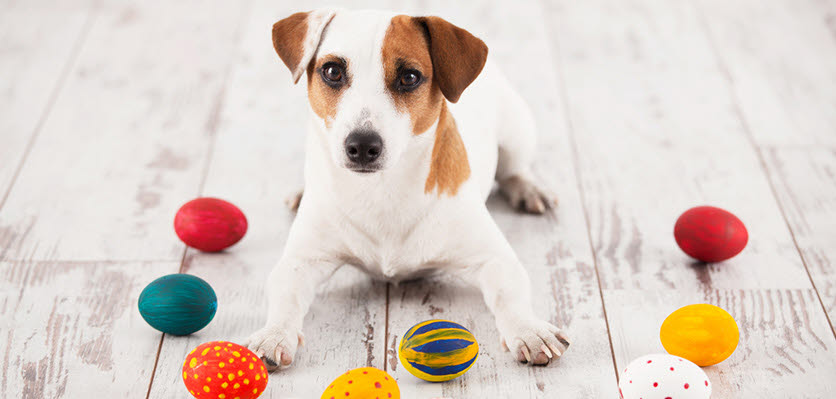
Most dogs love chocolate and with their strong sense of smell, they are very good at finding it. Not surprisingly, Easter is one of the busiest times for chocolate toxicities and it’s not uncommon for dogs to seek out the secret stash of eggs or go on their own Easter egg hunt in the garden.
Why is chocolate so bad for dogs?
Chocolate contains a derivative of caffeine called theobromine. Dogs are unable to metabolise theobromine so the compound builds up and leads to toxicity.
What are the symptoms of chocolate toxicity?
- Increased heart rate
- Vomiting
- Diarrhoea
- Agitation
- Muscle tremors
- Seizures
If untreated, severe chocolate toxicity can be fatal in some dogs.
What type of chocolate is toxic to dogs?
The darker the chocolate, the more toxic it is as it contains larger amounts of theobromine (cooking and dark chocolate are the most concerning). Toxicity also depends on the size of the dog and the amount of chocolate ingested. It’s important to be aware that ingestion of any amount of any type of chocolate for any sized dog can be toxic (and cause other problems due to high levels of fats and sugars) so if you are worried you should always seek veterinary advice.
What should I do if my dog eats chocolate?
If your dog ate your Easter egg or worse still, an entire chocolate cake, you should seek veterinary advice immediately.
Here's a timeline of what you should expect:
- Your veterinarian will ask you how much and what type of chocolate your dog has eaten. This helps them work out just how dangerous the ingestion might be. Remember that cooking and dark chocolate are the most toxic, followed by milk and then white chocolate. The toxicity is also related to the size of your dog and the amount ingested. Don’t forget that any amount of any chocolate can cause a problem so it is always best to ask a veterinarian for advice.
- If the amount of chocolate ingested is considered to be potentially toxic, your veterinarian will most likely induce emesis (which simply means they will make your dog vomit). This is usually done using injection under the skin or application of a medication into the eye. Vomiting tends to occur quickly and can sometimes be quite spectacular (especially if the wrapping has been consumed too!). A charcoal meal may also be administered to help reduce the absorption of the theobromine.
- If your veterinarian is concerned about your dog or doesn’t feel that enough chocolate was removed from the stomach via vomiting, repeat charcoal meals or even an enema may be given to help reduce the toxicity.
What is the treatment for severe chocolate toxicity?
Dogs with more severe chocolate toxicity will require further treatment including intravenous fluid therapy and hospitalisation.
I saw a dog treat that contained chocolate. Is that dangerous?
Some dog treats contain Carob which looks like chocolate so it’s easy to confuse the two. Carob doesn’t contain any theobromine so these treats are safe for your dog. Just watch out for products that claim to ‘contain only a small amount of milk or white chocolate’, although the risk of toxicity is low, it is best to avoid these altogether.
Even if you only suspect your dog has ingested chocolate, it is best to seek veterinary attention immediately. The sooner the theobromine is removed, the better the prognosis.
